Home » Application » Wind Power in Agricultural Applications
Wind Power in Agricultural Applications
The first heyday of wind power in America lasted from 1870 to 1930, 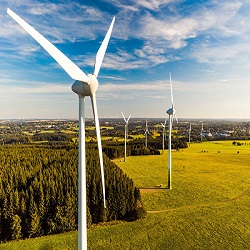 when thousands of farmers used the wind to pump water and generate power. The second heyday is just beginning. Wind power is the fastest growing energy source in the world, with annual average growth of 32 percent between 1998 and 2002. In the United States alone, nearly two billion dollars' worth of wind turbines are projected to come on line in 2003—enough to power 800,000 homes. The U.S.Department of Energy's (DOE) "Wind Powering America"initiative has set a goal of producing five percent of the nation's electricity from wind by 2020. DOE projects meant to achieve this goal will provide $60 billion in capital investment to rural America,$1.2 billion in new income to farmers and rural landowners,and 80,000 new jobs during the next 20 years.
when thousands of farmers used the wind to pump water and generate power. The second heyday is just beginning. Wind power is the fastest growing energy source in the world, with annual average growth of 32 percent between 1998 and 2002. In the United States alone, nearly two billion dollars' worth of wind turbines are projected to come on line in 2003—enough to power 800,000 homes. The U.S.Department of Energy's (DOE) "Wind Powering America"initiative has set a goal of producing five percent of the nation's electricity from wind by 2020. DOE projects meant to achieve this goal will provide $60 billion in capital investment to rural America,$1.2 billion in new income to farmers and rural landowners,and 80,000 new jobs during the next 20 years.
Until recently, wind power was concentrated in California. Now it can be found in most states. Farming regions in the Midwest, Great Plains,and West have emerged as major growth areas. Wind power is growing partly as a result of technology improvements and cost reductions and partly in response to state and federal laws and incentives. While many people will benefit in indirectly from the clean air and economic growth brought about by wind power development, farmers can benefit directly. Wind power can provide an important economic boost to farmers. Large wind turbines typically use less than half an acre of land, including access roads, so farmers can continue to plant crops and graze livestock right up to the base of the turbines.
Becoming a wind power developer has some important challenges, however. Purchasing one or more large wind turbines can be a substantial investment for even a large farm operation. And smaller wind farms may have to compete with larger, multiple-turbine wind farms,which often have lower production costs due to economies of scale in manufacturing and installation. While green markets may create a place for niche products,the market for green power is still young and profit margins are small. Farmers willing to take the risk could become wind investors as well. Pooling resources with other farmers can be an attractive option for reducing risk and lowering costs. Cooperative ownership of one or more turbines is common in Europe and is starting to take hold in the United States. In Minnesota, farmers have begun to develop wind co-ops with the help of additional state incentives that are available for small wind projects. Farmers may also be able to team up with a rural electric co-op to finance a project and sell the wind power to its customers.
The Wind Resource
In theory, the wind could produce five times more electricity than the United States currently uses. Some of the best wind resources in the country are on farmland, especially in the plains states. However, the wind resource varies greatly from one location to another. Many states have developed wind resource maps and have been measuring the wind and collecting data that farmers could find useful for determining the wind potential on their land. The market potential for wind also depends on the cost. The cost of producing wind power has fallen by as much as 90 percent since 1980. By 2010, electricity from new wind power projects will be cheaper than electricity from new conventional power plants,according to the DOE.
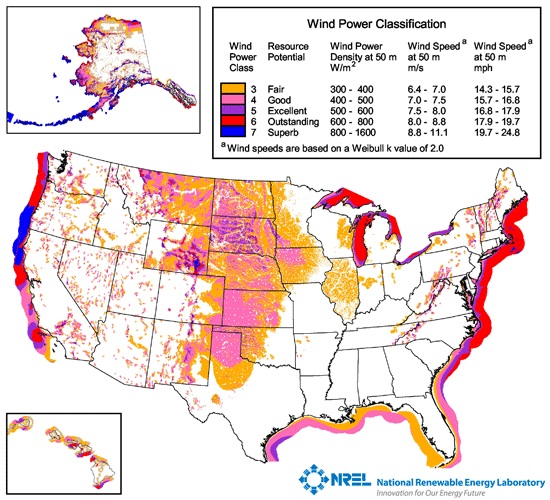
How the Wind Can Help Farmers
Farmers and ranchers are in a unique position to benefit from the growth in the wind industry. To tap this market, farmers can lease land to wind developers, use the wind to generate power for their farms, or become wind power producers themselves.
Working with Wind Developers
One of the easiest and most attractive ways for farmers to benefit from wind power is to allow developers to install large wind turbines on their land. The royalties are typically around $2,000 to $5,000 per year for each turbine, depending on its size. These payments can provide a stable supplement to a farmer’s income, helping to counteract swings in commodity prices.
Wind developers may offer landowners a fixed annual lease payment, a single up-front payment, a share of revenues from a wind project, or some combination of these. Although fixed payments may be lower than a share of revenues, they offer less risk to the landowner. Up-front payments may be attractive too, but if the property is sold within the time frame of the contract, it could complicate the sale. A new landowner who doesn’t receive any income from the wind turbines may want to pay a lower price for the property. Also, up-front payments are often structured so that the developer receives a perpetual lease to the wind resource rights on the property. This can be a disadvantage,as the value of wind power is expected to increase over time. Basing the lease on a share of revenues is likely to be the best option for capturing future increases in the value of wind power.
Owning a Turbine
Farmers and ranchers can generate their own power from the wind, just as their predecessors did in the 1930s and 1940s. Small wind generators, ranging from 400 watts to 40 kilowatts or more, can meet the needs of an entire farm or can be targeted to specific applications. In Texas and the West, for example, many ranchers use wind generators to pump water for cattle. Electric wind generators are much more efficient and reliable than the old water-pumping fan-bladed windmills. They may also be cheaper than extending power lines and are more convenient and cheaper than diesel generators. "Net metering" enables farmers to get the most out of their wind turbines. When a turbine produces more power than the farm needs at that moment, the extra power flows back into the electricity system for others to use, turning the electric meter backwards. When the turbine produces less than the farm is using, the meter spins forward, as it normally does. At the end of the month or year,the farmer pays for the net consumption or the electric company pays for the net production. Net metering rules and laws are in place in most states.
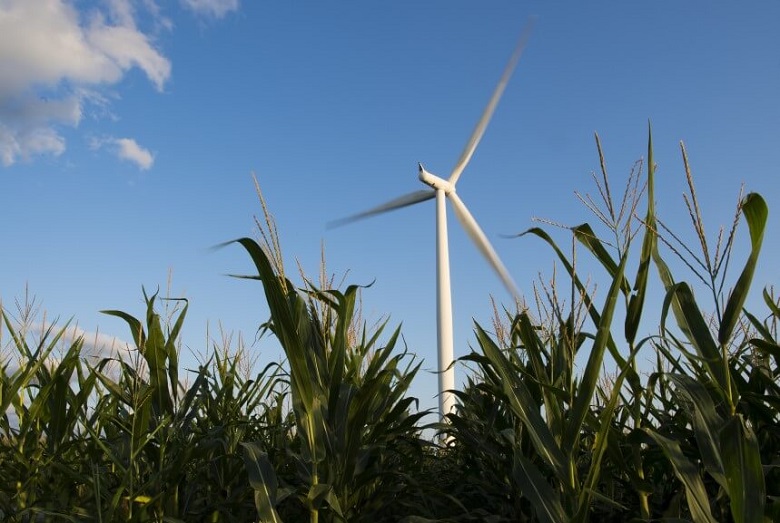
The Farmer as Wind Developer
A third opportunity for a farmer or group of farmers is to become a wind developer who produces power to sell to others. Electric companies increasingly buy their power from independent power producers rather than generating it themselves. They are also increasingly offering"green" or environmentally friendly power products and may be looking for suppliers of wind power. In addition, a number of states and the federal government provide incentives for wind power development.
Typical Expenses for a Wind Turbine
The economics of owning a turbine depend on many factors, including wind speeds, the size and cost of the wind turbine, interest rates, taxes, and electricity prices. One key issue is how much of the power the farm uses and how much is sold back to the utility. A study by the Izaak Walton League found that a wind turbine investment pays for itself most quickly when most or all of the power is used on the farm, since the farmer is saving power at the retail price, rather than selling it at a wholesale price.
With smaller wind turbines, most farm operations can use all of the power. But the cost per unit of electricity generated from smaller turbines is higher than that from larger turbines, so the payback period is longer. Since a well-maintained wind turbine can last 30 years, it can be a profitable investment. Like any other long-term investment, a thorough engineering and financial analysis is important before making the investment.
 when thousands of farmers used the wind to pump water and generate power. The second heyday is just beginning. Wind power is the fastest growing energy source in the world, with annual average growth of 32 percent between 1998 and 2002. In the United States alone, nearly two billion dollars' worth of wind turbines are projected to come on line in 2003—enough to power 800,000 homes. The U.S.Department of Energy's (DOE) "Wind Powering America"initiative has set a goal of producing five percent of the nation's electricity from wind by 2020. DOE projects meant to achieve this goal will provide $60 billion in capital investment to rural America,$1.2 billion in new income to farmers and rural landowners,and 80,000 new jobs during the next 20 years.
when thousands of farmers used the wind to pump water and generate power. The second heyday is just beginning. Wind power is the fastest growing energy source in the world, with annual average growth of 32 percent between 1998 and 2002. In the United States alone, nearly two billion dollars' worth of wind turbines are projected to come on line in 2003—enough to power 800,000 homes. The U.S.Department of Energy's (DOE) "Wind Powering America"initiative has set a goal of producing five percent of the nation's electricity from wind by 2020. DOE projects meant to achieve this goal will provide $60 billion in capital investment to rural America,$1.2 billion in new income to farmers and rural landowners,and 80,000 new jobs during the next 20 years.
Until recently, wind power was concentrated in California. Now it can be found in most states. Farming regions in the Midwest, Great Plains,and West have emerged as major growth areas. Wind power is growing partly as a result of technology improvements and cost reductions and partly in response to state and federal laws and incentives. While many people will benefit in indirectly from the clean air and economic growth brought about by wind power development, farmers can benefit directly. Wind power can provide an important economic boost to farmers. Large wind turbines typically use less than half an acre of land, including access roads, so farmers can continue to plant crops and graze livestock right up to the base of the turbines.
Becoming a wind power developer has some important challenges, however. Purchasing one or more large wind turbines can be a substantial investment for even a large farm operation. And smaller wind farms may have to compete with larger, multiple-turbine wind farms,which often have lower production costs due to economies of scale in manufacturing and installation. While green markets may create a place for niche products,the market for green power is still young and profit margins are small. Farmers willing to take the risk could become wind investors as well. Pooling resources with other farmers can be an attractive option for reducing risk and lowering costs. Cooperative ownership of one or more turbines is common in Europe and is starting to take hold in the United States. In Minnesota, farmers have begun to develop wind co-ops with the help of additional state incentives that are available for small wind projects. Farmers may also be able to team up with a rural electric co-op to finance a project and sell the wind power to its customers.
The Wind Resource
In theory, the wind could produce five times more electricity than the United States currently uses. Some of the best wind resources in the country are on farmland, especially in the plains states. However, the wind resource varies greatly from one location to another. Many states have developed wind resource maps and have been measuring the wind and collecting data that farmers could find useful for determining the wind potential on their land. The market potential for wind also depends on the cost. The cost of producing wind power has fallen by as much as 90 percent since 1980. By 2010, electricity from new wind power projects will be cheaper than electricity from new conventional power plants,according to the DOE.

How the Wind Can Help Farmers
Farmers and ranchers are in a unique position to benefit from the growth in the wind industry. To tap this market, farmers can lease land to wind developers, use the wind to generate power for their farms, or become wind power producers themselves.
Working with Wind Developers
One of the easiest and most attractive ways for farmers to benefit from wind power is to allow developers to install large wind turbines on their land. The royalties are typically around $2,000 to $5,000 per year for each turbine, depending on its size. These payments can provide a stable supplement to a farmer’s income, helping to counteract swings in commodity prices.
Wind developers may offer landowners a fixed annual lease payment, a single up-front payment, a share of revenues from a wind project, or some combination of these. Although fixed payments may be lower than a share of revenues, they offer less risk to the landowner. Up-front payments may be attractive too, but if the property is sold within the time frame of the contract, it could complicate the sale. A new landowner who doesn’t receive any income from the wind turbines may want to pay a lower price for the property. Also, up-front payments are often structured so that the developer receives a perpetual lease to the wind resource rights on the property. This can be a disadvantage,as the value of wind power is expected to increase over time. Basing the lease on a share of revenues is likely to be the best option for capturing future increases in the value of wind power.
Owning a Turbine
Farmers and ranchers can generate their own power from the wind, just as their predecessors did in the 1930s and 1940s. Small wind generators, ranging from 400 watts to 40 kilowatts or more, can meet the needs of an entire farm or can be targeted to specific applications. In Texas and the West, for example, many ranchers use wind generators to pump water for cattle. Electric wind generators are much more efficient and reliable than the old water-pumping fan-bladed windmills. They may also be cheaper than extending power lines and are more convenient and cheaper than diesel generators. "Net metering" enables farmers to get the most out of their wind turbines. When a turbine produces more power than the farm needs at that moment, the extra power flows back into the electricity system for others to use, turning the electric meter backwards. When the turbine produces less than the farm is using, the meter spins forward, as it normally does. At the end of the month or year,the farmer pays for the net consumption or the electric company pays for the net production. Net metering rules and laws are in place in most states.

The Farmer as Wind Developer
A third opportunity for a farmer or group of farmers is to become a wind developer who produces power to sell to others. Electric companies increasingly buy their power from independent power producers rather than generating it themselves. They are also increasingly offering"green" or environmentally friendly power products and may be looking for suppliers of wind power. In addition, a number of states and the federal government provide incentives for wind power development.
Typical Expenses for a Wind Turbine
The economics of owning a turbine depend on many factors, including wind speeds, the size and cost of the wind turbine, interest rates, taxes, and electricity prices. One key issue is how much of the power the farm uses and how much is sold back to the utility. A study by the Izaak Walton League found that a wind turbine investment pays for itself most quickly when most or all of the power is used on the farm, since the farmer is saving power at the retail price, rather than selling it at a wholesale price.
With smaller wind turbines, most farm operations can use all of the power. But the cost per unit of electricity generated from smaller turbines is higher than that from larger turbines, so the payback period is longer. Since a well-maintained wind turbine can last 30 years, it can be a profitable investment. Like any other long-term investment, a thorough engineering and financial analysis is important before making the investment.
Post a Comment:
You may also like:

Featured Articles
History of Wind Energy Applications
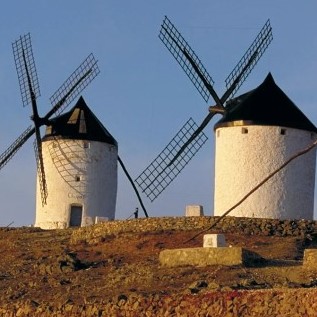 Wind is used to produce electricity by converting the kinetic energy of air in motion into electricity. In modern wind ...
Wind is used to produce electricity by converting the kinetic energy of air in motion into electricity. In modern wind ...
 Wind is used to produce electricity by converting the kinetic energy of air in motion into electricity. In modern wind ...
Wind is used to produce electricity by converting the kinetic energy of air in motion into electricity. In modern wind ...Application in Energy Storage
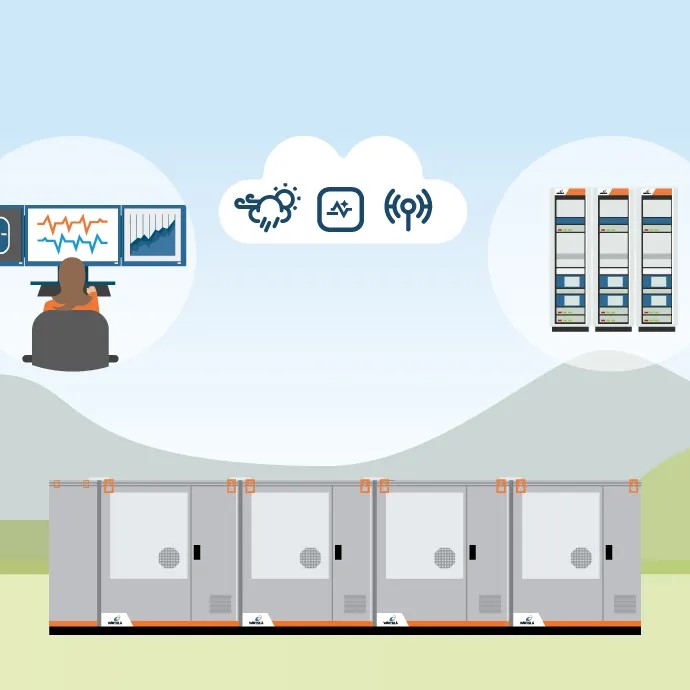 With the development of science and technology, energy storage is one of the most effective ways to solve the problem of ...
With the development of science and technology, energy storage is one of the most effective ways to solve the problem of ...
 With the development of science and technology, energy storage is one of the most effective ways to solve the problem of ...
With the development of science and technology, energy storage is one of the most effective ways to solve the problem of ...Application in Severe Climates
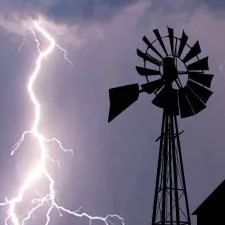 Operation in severe climates imposes special design considerations on wind turbines. Severe climates may include those with ...
Operation in severe climates imposes special design considerations on wind turbines. Severe climates may include those with ...
 Operation in severe climates imposes special design considerations on wind turbines. Severe climates may include those with ...
Operation in severe climates imposes special design considerations on wind turbines. Severe climates may include those with ...Applications for Small Wind Turbines
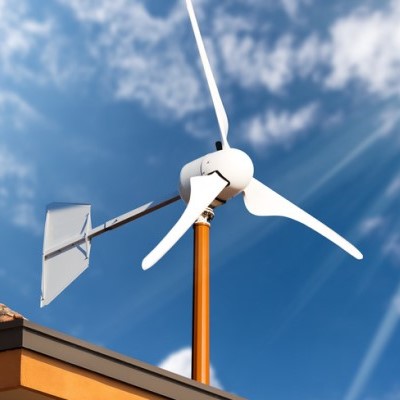 Small-scale wind energy is a small but rapidly growing segment of the RE industry in the US. Like other renewable sources, in its ...
Small-scale wind energy is a small but rapidly growing segment of the RE industry in the US. Like other renewable sources, in its ...
 Small-scale wind energy is a small but rapidly growing segment of the RE industry in the US. Like other renewable sources, in its ...
Small-scale wind energy is a small but rapidly growing segment of the RE industry in the US. Like other renewable sources, in its ...Wind Turbine for Onshore Application
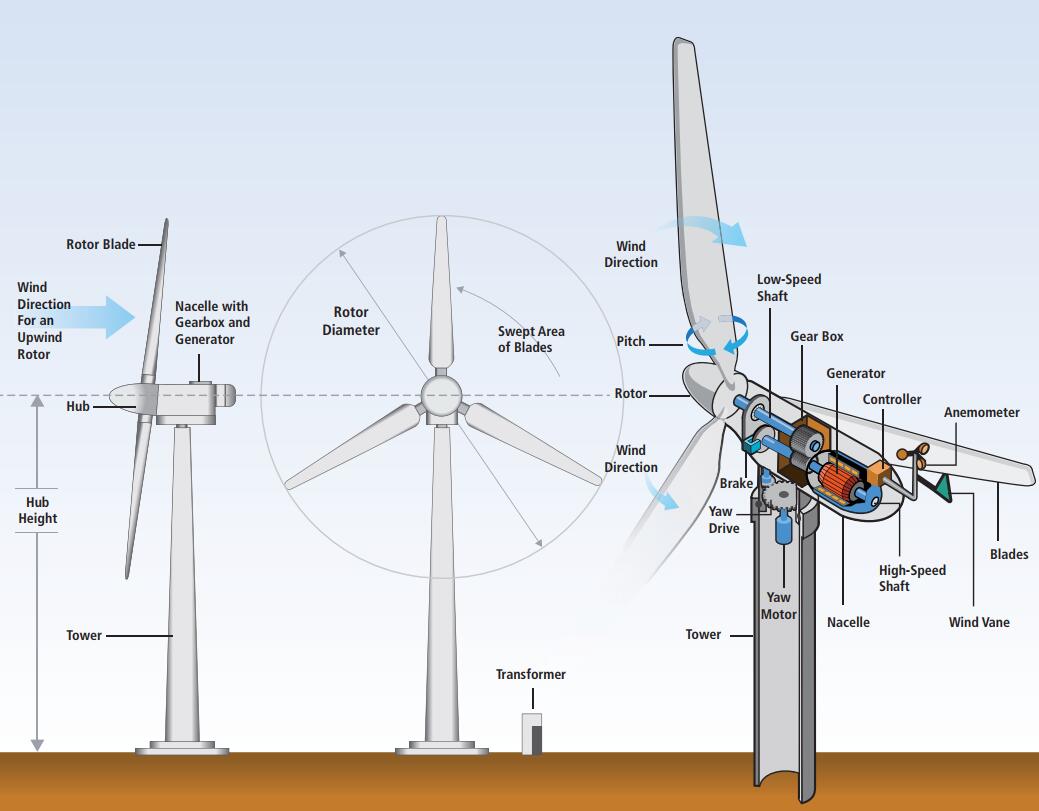 Modern, commercial grid-connected wind turbines have evolved from small, simple machines to large,highly ...
Modern, commercial grid-connected wind turbines have evolved from small, simple machines to large,highly ...
 Modern, commercial grid-connected wind turbines have evolved from small, simple machines to large,highly ...
Modern, commercial grid-connected wind turbines have evolved from small, simple machines to large,highly ...